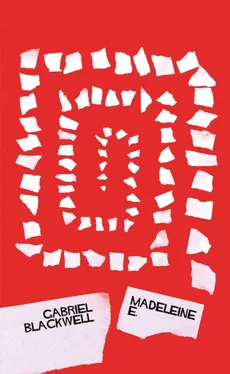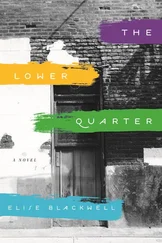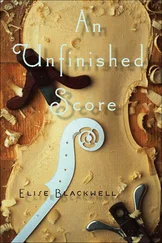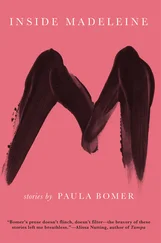Are all attempts to relive the past incitements to suicide?
Another way of saying this: for Judy, Madeleine’s faked death is a kind of suicidal fantasy — Judy “being” Madeleine at the time. She is able to forget it because she cannot revisit the scene of the crime. But Scottie forces Judy to think as she did at the time she pretended to be Madeleine, even going so far as to take her, costumed in the way she had been at the time, back to San Juan Bautista and the tower where she saw herself thrown from the tower by a man who was pretending that she was the woman he was throwing from the tower. Now, in the tower with another man pretending that she is not who she is, she is helpless not to act out the fantasy that is really history — she must throw herself from the tower. What else can she possibly do?
…
The only serious philosophical question is what Eurydice saw when Orpheus looked back. What Eurydice saw when Orpheus looked back determines the worth of his song.
(Peter Dimock, George Anderson )
…
Casanova considered the limits of human reason. He established that, while it might be rare for a man to be driven insane, little was required to tip the balance. All that was needed was a slight shift, and nothing would be as it formerly was. Casanova likened a lucid mind to a glass, which does not break of its own accord. Yet how easily it is shattered. One wrong move is all that it takes.
(Sebald, Vertigo )
…
Scottie says, “It’s too late. There’s no bringing her [meaning Madeleine] back.” To Judy. Just before she falls.
…
It is a fundamentally insane notion, he continues, that one is able to influence the course of events by a turn of the helm, by will-power alone, whereas in fact all is determined by the most complex interdependencies.
(Sebald, Vertigo )
…
In Boileau and Narcejac’s D’Entre les Morts , Flavierès (Scottie) strangles Renée (Judy). Though Madeleine’s death earlier in the narrative has been faked in the same way — a fall from a church bell-tower — it is not repeated again in the novel as it is in Vertigo . Of course Vertigo ’s ending has been changed; I cannot imagine any studio in 1950s Hollywood greenlighting a script that has the protagonist strangling the heroine at the end. Nor can I imagine an actor willing to play such a part. Jimmy Stewart was already playing wildly against type in Vertigo , as a man who cruelly transforms a woman against her will into the woman he is obsessed with, a man who then — though the ending of the film leads us to believe that Judy’s death is an accident — drives this same woman to suicide. And yet Flavierès, who is unequivocally Renée’s murderer, seems so plainly out of control that his actions seem somehow more excusable than those of Scottie, who is completely in control in taking Madeleine down to San Juan Bautista again and seems to thus be acting all the more cruelly toward her. Perhaps it is that Renée will not admit to being Madeleine, even though Flavierès is so certain that she is (and finds evidence of it in the necklace) — the reader can easily believe that she is cruel, too, taunting the obviously disturbed Flavierès — whereas Judy seems innocent, having undeceived us at the very beginning of her story by coming clean in her letter to Scottie. She seems to sincerely regret her actions in the first part of the narrative; the same cannot be said about Renée, who maintains her stonefaced denial even in the face of the evidence of the necklace, maintains it so long and so adamantly that it is possible to read the book as the story of the murder of an innocent woman by a mentally-disturbed man and nothing more. No plot against Flavierès, no perfect murder on the part of Gevigne, no echoes of the past in Madeleine, no doubling or trebling in Renée, just a man completely undone by fate and the woman he tortures and then murders.
…
Far from becoming clearer, things now appeared to me more incomprehensible than ever. The more images I gathered from the past, I said, the more unlikely it seemed to me that the past had actually happened in this or that way.
(Sebald, Vertigo )
…
Thanatos can assume any form it wishes; it can kill eros , the life drive, and then simulate it. Once thanatos does this to you, you are in big trouble; you suppose you are driven by eros but it is thanatos wearing a mask.
(Dick, VALIS )
…
Isn’t Judy’s death precisely what Scottie wants out of his visit to San Juan Bautista? Though he is, one supposes, trying to correct his previous mistake, he certainly never explicitly says so; what he says is “There’s just one thing I’ve got to do, then I’ll be free.” It almost isn’t necessary to say this statement can be read several different ways, and only one is positive — Judy knows it. The one thing that is absolutely clear is that Scottie is trying to recreate exactly the previous visit. Though this time he can climb to the top and look out, everything else must be as it was. If that is so, mustn’t it end with “Madeleine’s” death? There is no other possible ending that would satisfy him, it seems. He may or may not believe he is going to rectify the past — he does, as far as he is concerned, by overcoming his acrophobia — but what we discover is that he can only rectify his past, not Judy’s, not Madeleine’s, as though once a witness to her death, he will always remain just a witness, as though all of the events that follow take place behind glass. Just as he was powerless to help the woman he believed to be Madeleine then, he will not be able to help the woman he believes to be Madeleine now (here, in this final scene, is the only time he will call Judy Madeleine). If he were out to rectify the past, he would not bring Judy to San Juan Bautista. If he were out to rectify the past, he would not bring Judy to the top of the tower. If he were out to rectify the past, he would leave well enough alone. It always seems possible to love someone for who they are, even while it is impossible to love them for anything but what one believes them to be.
…
Of course, nothing so bad happened or even could have happened at San Juan Bautista, because there is no tower there. There was once a steeple, but it burned in a fire. Hitchcock’s tower is a special effect, a combination of matte painting, scale models, and trick photography. The tower is an illusion, Hitchcock’s fiction. My girlfriend and I looked up into the blue of the sky. A wispy cloud passed. She told me she was cold. We got back in the car, started on our way back to San Francisco. Across the lawn, another couple was fighting with each other. Their voices were not loud, but they were intense, meant not to carry but definitely meant to be heard. Because of the way the man held the woman, it was impossible to tell who was pulling who, but they were stumbling towards the church, almost as if by accident. My girlfriend called to me from the car.
…
Every effort to understand destroys the object studied in favor of another object of a different nature; this second object requires from us a new effort which destroys it in favor of a third, and so on and so forth until we reach the one lasting presence, the point at which the distinction between meaning and the absence of meaning disappears: the same point from which we began.
(Claude Levi-Strauss, Tristes Tropiques )
…
Another inquest, surely. Even if there is no corresponding breakdown, there must be another inquest. And can it go any differently than did the first? “The law has little to say on the subject of things left undone.” Vertigo itself is such a thing, it seems to me, for here we are, on the brink of beginning things again, and yet here the narrative ends. One might object that, with Judy dead, there can be no repetition, but that supposes Judy’s letter is real, something I cannot believe in myself.
Читать дальше












